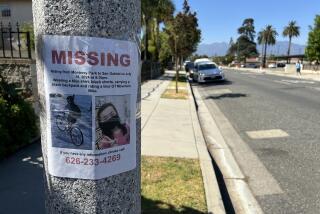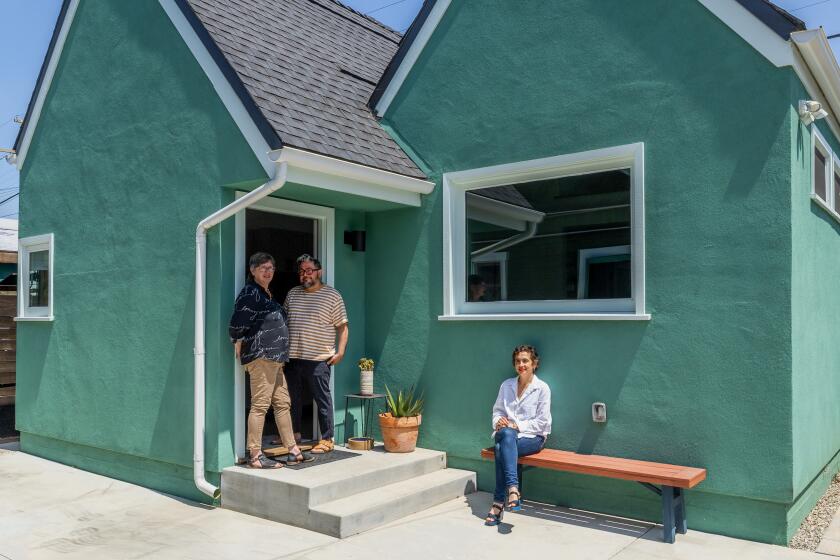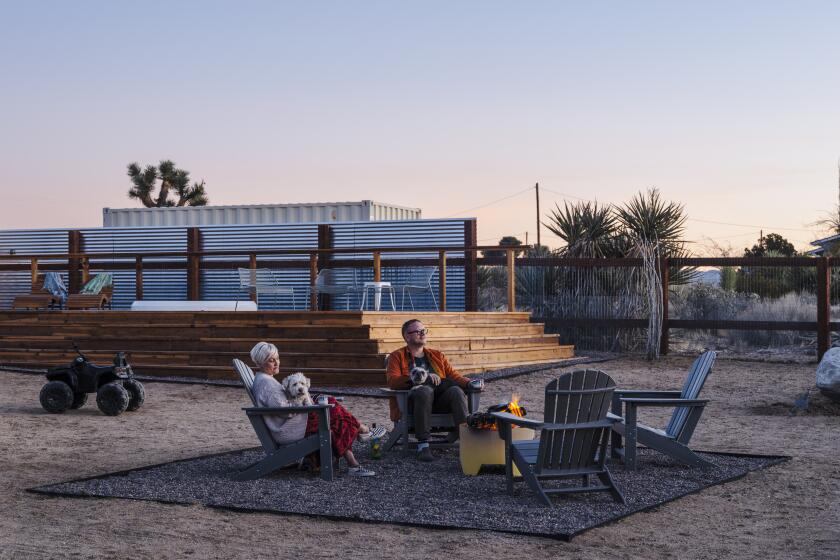Preserve These Buildings, Already!
Enough already with the opposition by the La Brea and Fairfax neighborhoods to the proposed plans to recycle the landmark Pan Pacific building.
As the residents there know, and are quick to tell this boychik at the drop of a teabag into a glass of hot water, we live in an imperfect, sweet and sour world, where on occasion we have to take a little lemon with our sugar.
So it is with the Pan Pacific, where the price of saving what is left of the evocative Streamline Moderne styled structure is its adaptive reuse as an ice rink, a gymnastic center, two restaurants and five movie theaters.
Residents contend the uses will attract “traffic” and “criminals.” While no doubt traffic will increase somewhat, the facilities should generate a healthy use that, if anything, will make the area safer. We look forward to such a finding from the environmental impact report the community has requested.
Certainly the uses are better than letting the Pan Pacific continue to deteriorate to where, if it doesn’t collapse first, it will have to be demolished. Then who knows what will be proposed for the site if it is sold on the basis of highest and worst use, as is the tradition in government.
To lose the Pan Pacific, a local, state and national landmark that has the potential of once again becoming a focal point of pride for the area, would be a shanda , Yiddish for a shame. There are too few landmarks in the Fairfax district to squander.
To be sure, crime and traffic are problems in the neighborhood, and the park there at times can get rowdy. But the Pan Pacific should not be punished for it. Instead, residents would do well to stop complaining and push for a positive plan to make the area safer, such as cul de sacing local streets, widening sidewalks, improving lighting, increasing police patrols, and generally encouraging pedestrian use.
You don’t have to love the firms of Kornwasser & Friedman, and partners Goldrich & Kest, who made the proposal, or the county and Supervisor Ed Edelman, who embraced it, to recognize that the proposal has merit.
Los Angeles may not have turned out to be the goldeneh medina , the golden country as promised in Yiddish lore. But I think an ice rink and a gymnastic center, and a policy of early bird specials at the restaurants and movies proposed for the Pan Pacific, along with more of a police presence, might help.
The Pan Pacific is just one of the region’s many landmarks facing extinction unless some bold actions are taken.
Heading the endangered architecture list in Los Angeles are our marvelous movie palaces. These include the Los Angeles, Tower, Mayan, Million Dollar, Palace, Orpheum and Globe theaters, a free-for-all of exuberant architectural styles that form a national historic district along downtown’s Broadway. And let us not forget the California Theater a few blocks away on South Main.
While the theaters are still operating, they are the worse for wear and on shaky financial grounds that could bring their curtains down in the too near future. Other palaces being threatened are the Alex in Glendale and the Golden Gate in Whittier.
The Brockman Building, which includes the Brooks Bros. store, lends a sense of history and place, as well an urban scale, to the 500 block of West 7th Street downtown but it is the target of a proposed mega development being considered by a Japanese investment firm. The dropping of this bomb is being held up by an environmental impact report now being drafted and the slight hope that the architects involved might find a way to save the buildings and their local reputation.
Up for sale, the Ambassador Hotel has been eyed by the Los Angeles Unified School District as a high school site. There are ways the hotel could be recycled and the balance of the land used for educational facilities, but one has learned when dealing with the district not to expect any imaginative planning or sympathy for historic landmarks, as evidenced by its failed land grab of last year.
Also up for sale is the Beaux Arts styled Canfield-Moreno estate atop Micheltorena hill in the Silver Lake area. The hope is that someone will buy and save the villa, and develop on the remaining land a complex of compatible residences. The fear is that the entire estate will be leveled so that as many as possible of the usual overpriced, ticky-tacky units can be accommodated.
Unless a benefactor is found, that most likely will be the fate of the faded Italian Renaissance-styled McKinley Mansion, at the southeast corner of Lafayette Park Place and 3rd Street, and the Rivington Place apartment court complex on Ocean Avenue in Santa Monica. Both appear to be victims of greed, aggravated in the case of the mansion by time, and in the apartment court by Santa Monica’s self-defeating rent control laws that precluded a fair rate of return and discouraged maintenance.
Also showing the effects of time, and speculation, is the Market Place block of Colorado Avenue in Old Pasadena. Purchased and scheduled to be rehabilitated in the early ‘80s with the blessing of the city, the block today is derelict, an eye sore inviting a disaster. In a similar state is the Huntington Sheraton, which had been the subject of a heated referendum last spring. There has been much talk about both projects, with lots of paper being shuffled, but so far no construction.
The Breed Street synagogue in Boyle Heights, the oldest remnant of Jewish roots in Los Angeles, is facing demolition if it is not renovated up to seismic standards. There is a slight hope the Jewish Historical Society might come to the rescue if somehow it can tap some of the funds now going to the more fashionable museum projects on the Westside.
Other endangered landmarks include the concrete block houses designed by Frank Lloyd Wright that are slowly decaying; an array of public facilities, in particular many branch libraries; and various streetscapes and neighborhoods threatened by insensitve overdevelopment.
Unfortunately, the list can go and on. While we can take heart in the growing awareness and appreciation of the city’s rich historic and creative legacy, what obviously also is needed is a renewed dedication to preserving it.
More to Read
Sign up for Essential California
The most important California stories and recommendations in your inbox every morning.
You may occasionally receive promotional content from the Los Angeles Times.






